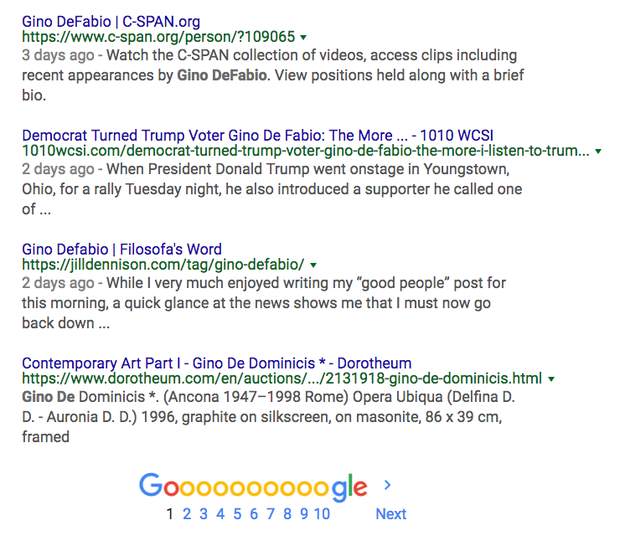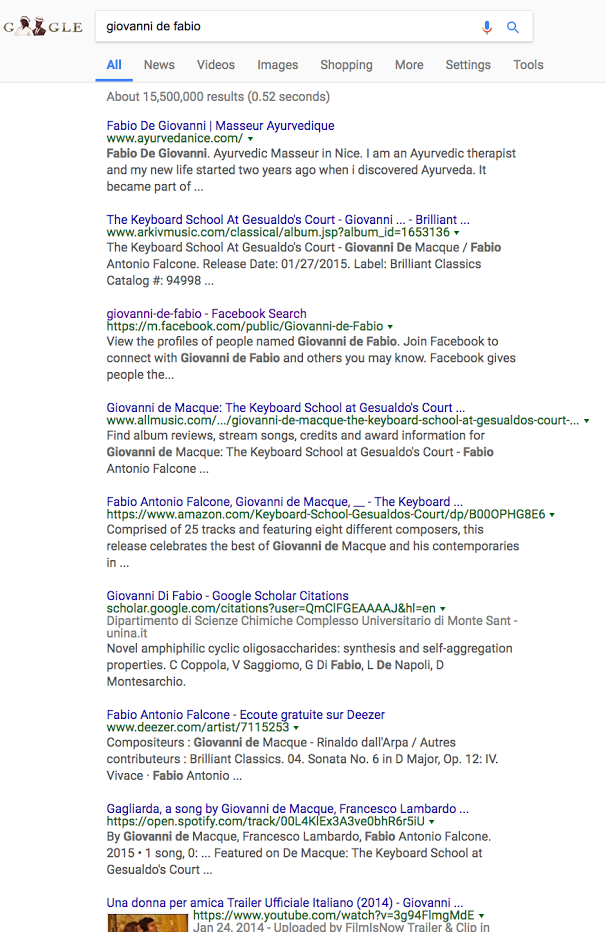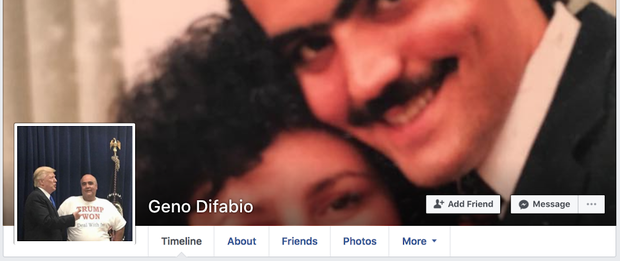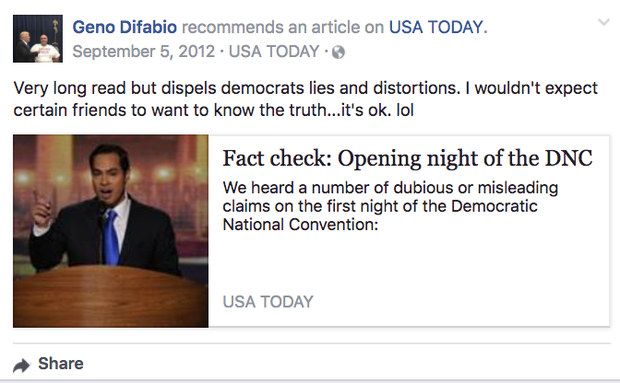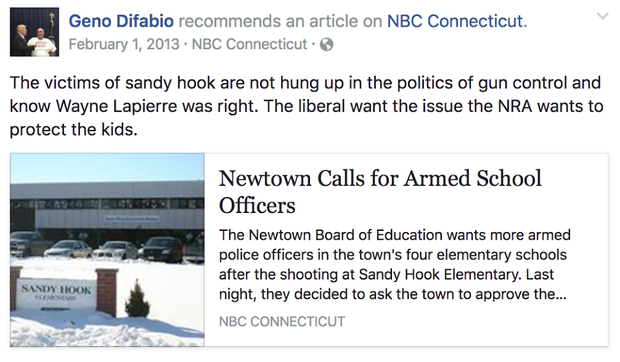
“Truth is great and will prevail if left to herself… she is the proper and sufficient antagonist to error, and has nothing to fear from the conflict.”
—Thomas Jefferson
This Friday I started drafting an article about the recent surge in President Trump’s culture war rhetoric: the trans ban; the Boy Scouts speech; some disturbing remarks about law enforcement; criminalizing undocumented immigrants; etc etc. It coincided with a surge of anger about developments in the Russia investigation and Jeff Sessions, and the third/fourth/fifth failure to repeal Obamacare. There’s a cliche that leaders use war to distract their people from domestic problems and rally support against a common enemy, and Trump seems to be doing this, except in this case it’s a culture war and the common enemy is other Americans. I’d still like to write that article, but instead I’m writing one about how I fucked up big time while writing it.
Yep, for a while I was fake news. This article is about how it felt, and what I’ve learned from it both as a journalist and a reader.
A teaser, though: I’ve since redeemed myself a little bit. I’ll show you that at the end. First, here’s how fake news happened.
1. It’s Not Fake News
Here’s a way to put what I did in a nutshell. It’s not exactly accurate, and it sounds a lot worse than it is, but it does get at how bad it felt:
I said a person was invented by Fox News, in collusion with the Trump campaign, and was called up onstage to dupe people at a Trump rally. As you might have guessed, this person is real, and I’m an asshole.
More on why it’s not accurate in a bit. But my first point: This isn’t “fake news.” Fake news is news that’s entirely made up, like some stories about Hillary Clinton during the 2016 campaign: she had a leaker killed; she and John Podesta and the DNC were running a child sex trafficking ring out of a Washington, D.C., pizza parlor; or, most recently, the murder of DNC employee Seth Rich, who was said to have hacked the DNC and given the emails to WikiLeaks; or wait, no, strike that—that was actually a guy named Imran Awan, who never worked for the DNC and had no connection to Rich. Stories like this are conspiracy-grade fictions. False, fake news.
Mine—like the story that caused three CNN reporters to resign, or like Time Magazine’s Zeke Miller telling the press pool Trump had removed a bust of Martin Luther King, Jr., from the Oval Office—was what we call “a mistake.” I’ve clearly realized that, apologized, and retracted.
In order to combat fake news—and equally importantly, fake accusations of fake news—we have to learn to love mistakes.
Here’s how it unfolded.
Come On Up Here, Gino
I was doing research for that article on the culture war distraction. Trump had just held a campaign rally in Youngstown, Ohio, where he spewed culture war stuff like this:
The predators and criminal aliens who poison our communities with drugs and prey on innocent young people, these beautiful, beautiful,innocent young people will, will find no safe haven anywhere in our country. And you’ve seen the stories about some of these animals. They don’t want to use guns, because it’s too fast and it’s not painful enough. So they’ll take a young, beautiful girl, 16, 15, and others and they slice them and dice them with a knife because they want them to go through excruciating pain before they die. And these are the animals that we’ve been protecting for so long. Well, they’re not being protected any longer, folks.
I pulled up the transcript to see how much of his speech was like that, designed to trigger white nationalists and incite anger against liberals and immigrant communities. The answer: a lot of it, though that was the most graphic passage. But something else got my attention.
At the beginning of the speech, Mr. Trump called a guy up on stage to testify: Gino Defabio. Gino, Mr. Trump said, had appeared on Fox News that morning as a member of a panel of Democrats who supported Trump. Mr. Defabio was from Youngstown, in a swing state, and, conveniently, exactly where Mr. Trump was holding the rally that night. When the president called Gino onstage, the self-described “lifelong Democrat” gushed about Neil Gorsuch, of all things. He also said this:
It was more than a little weird, so I decided to look Mr. Defabio up and see if all parts of these stories aligned. And lo and behold, Gino Defabio didn’t exist! He had no social media footprint—none—Google returned almost nothing beyond the rally, and a public records website only turned up a 72-year-old man living in Arizona.
I put in another hour of research on this before I posted. Not extensive by journalism standards, but an honest effort fueled by a nitrogen-infused, cold-brewed heart-attack-in-a-can (“coffee”) which I wouldn’t have finished in thirty minutes if I’d known it contained 330 milligrams of caffeine. Regardless, I eventually got to the point where in my excited state I felt comfortable posing the question to the Twits: Is Gino Defabio real?
It was more than trivial, because if Gino was indeed a plant, it might indicate a direct line between Fox News and the Trump administration: colluding to create and legitimize a fraud.
I took pains to make it clear this wasn’t a claim. I knew there were a lot of conditionals, and this was a human being I was talking about. So I posed the question and showed my work with screenshots. Here are the ones I have left.
A screen grab of one of my Facebook searches:
Here are the first two pages of the Google search (the results only grew more irrelevant after this):
I also tried searches using alternate spellings, as well as with the longer first names Eugenio, Ambrogino, Luigino, and Giovanni.
And here’s a snap from one of the public records sites.
The tweets blew up. The thread got over a hundred retweets in maybe three minutes, and I’d shared it with writers and friends I hold in high esteem. Three minutes is also how long it took for several (several) people to show me that Gino Defabio is a real person. Here’s his Facebook page:
Oh. An i. Whoops.
(But Time Magazine spelled it wrong! Fake news!)
I deleted the thread, tweeted an apology, then walked out of the coffee shop to retch in the bushes. What followed was one of the worst and most bizarre emotional experiences of my life. For maybe thirty minutes, no kidding, I was involuntarily hitting myself and clawing at my skin, my arms and legs shaking. (I attribute some of the nightmare to that can of nitro coffee. Holy hell.) I wanted to be anything other than what I was—including nothing. This, I understood, was what people meant by mortification: A level of embarrassment that erases existence. I’m still not really over it, if you can’t tell.
Truth, Lies, and the Pee Pee Tape
My reaction might seem excessive and hard to relate to. It’s okay to make mistakes, after all. We’re only human. For a journalist, though, error is tied to your identity. We’re not supposed to make mistakes—at least not big, obvious ones. It’s practically the job description. You need your readers to trust you. Once you lose that, you’re toast. Not only that, but every time you make a mistake you chip away at your credibility with yourself. Accuracy and honesty are fundamental parts of who you are, of how you see yourself, how others see you, and you have to learn to be at peace with it.
That said, I’ve written more than one tongue-in-cheek piece about the stupid pee-pee tape. Journalism can and probably at some level should be fun. I’m less willing to hitch my wagon to reporters who take themselves too seriously.
Of course I’ve made mistakes before, but nothing I’d call major, and to be fair I’d caveated the hell out of my post and admitted it would more likely than not blow up in my face. But I’d been reckless, and hadn’t, as I first thought, gone through every spelling permutation. The crowd quickly corrected me. I was a fraud. A phony. A fake. Naturally, I wondered why I felt this badly about something on the scale of a tweet.
Information travels exponentially: The faster and farther it goes, the faster and farther it goes. You might think this has little to do with the truth, that good information and bad information are, after all, just information. But it actually has a lot to do with the truth. Stories don’t go viral because they’re true. They go viral because they’re good stories, or because they shock us, or they tell us what we want to believe. If you can get all three into one, like it seems my Gino birther story did, then it’s over. You don’t need truth; you just need the appearance of truth.
If you can harness this formula, you’re going to do two things: Make a lot of money, and inform a lot of people.
Or misinform them.
The Constitution doesn’t seem to have considered this. The founding fathers, as products of the Enlightenment, believed reason and truth triumph in the end. The First Amendment seems to assume this is a fundamental human law, that if the free exchange of information were codified and protected, such a freedom would inevitably give rise to a wise and well-informed electorate. This, it should go without saying now, is bullshit. If that wasn’t obvious to you earlier, the 2016 election has laid it bare.
Part of this is economics. As noble as it would be of us, we’re not willing to pay for the truth. The truth isn’t always sexy. And on top of that we literally get high when we prove ourselves right. That has nothing at all to do with Truth, but with choice. Which drug dealer would you go to? The one who makes you feel bad or the one who makes you feel good?
This of course leads to a bigger question: Where does the fault lie—with the press, or with the people?
The answer: Both.
To Err is FAKE NEWS!
Journalism, in the end, is almost as much about image as it is about the truth.
First, we all know the press has a responsibility to the truth. But “truth” is an impossible standard. We can’t expect anyone can be correct all the time: Not Einstein, not the Failing New York Times. Not even Fox News or the Denver Guardian. No one holds a claim to absolute truth, but we still expect the media to hold themselves to that impossible standard. I mean, what’s capital-T “true”? The whole point of science is the assumption that we don’t know this. This is a large part of the “FAKE NEWS!” problem.
Note the “FAKE NEWS!” problem is different from the “fake news” problem. I’m concerned here with what we call fake news and why. Case in point, why would anyone call me fake news for getting the Gino thing wrong? You might say no one would, but you’d be wrong. Just ask CNN.
The “FAKE NEWS!” problem is partly the media’s own doing. The press has historically portrayed itself as the guardian of the truth, of facts. It’s oversold this, to the point where we expect near perfection from the mainstream media. I mean, a certain type of person loves to look for typos in the Times and then send them to the Times. This level of self-importance makes the press an easy target: Americans hate pride.
(This supports my earlier point about not being so very serious.)
The right wing, of course, has seized on this and exploited it. “Middle” America has been told for years that the coastal elites/liberal media/etc bend the news sharply to the left. Many mainstream outlets do lean left, but this bias is exaggerated (so says this unabashedly left-leaning writer). But you can’t deny that conservative leaders over the past few decades have happily sustained a myth that magnifies this “guardians of the truth” image. The bigger they are, the harder they fall.
This is why Trump can point to what is in reality a mistake and get away with saying “FAKE NEWS!” to his base, which gleefully echoes it (and makes memes about it that Trump, justified!, shares). Mistakes are inevitable. This barrage will continue.
It’s the job of the press to correct the record. This is what I did, as quickly and as plainly as I could, and it’s what any honest journalist or media institution should do.
CNN, for instance, after printing a story that didn’t rise to the outlet’s editorial standards, let three staffers go and retracted the story. But that story wasn’t wrong, and certainly wasn’t fake. It cited only one source, an anonymous one, and CNN decided it couldn’t, and wouldn’t, stand by it. (Perhaps this is why Trump tried, briefly, to walk back his accusations of “fake news” to “fraud news.”)
Let’s compare this to a story that was posted on the Fox News website regarding the investigation into the 2016 murder of DNC Staffer Seth Rich. To be clear: This story is bullshit, and the people who are purveying it are purveying not a mistake but a gross, offensive lie. (I’m reminded of Trump’s own birtherism FAKE NEWS!) Fox retracted the piece. But guess who didn’t? Sean Hannity, the loudest voice on the network, who keeps bringing this story up. He said, after receiving a letter from the Rich family asking him to please stop dragging them through hell, “I am not Fox.com or FoxNews.com, I retracted nothing.”
But news broke yesterday that the private investigator hired to investigate the unsolved Seth Rich murder had filed a lawsuit against Fox News. He said the Fox News reporter who broke the story fabricated his quotes. What’s more, the detective was the only named source quoted. What’s MORE, when he complained to the Fox News analyst who hired him to investigate the murder, he was told: “that is the way the President wanted the article.”
Now THAT is fake news. Fake news gets you sued. Mistake news doesn’t.
(It also, I’d like to point out, suggests the White House colluded in a lie with Fox News, which was my big point.)
So in a way, my mistake made me feel really good: I have a soul; I have standards; I feel remorse; I understand my responsibility to my readers. I felt for the first time just how craven, how hopelessly tarred Sean Hannity’s humanity really is. I got a sense of the depth of his emptiness. His heart is a piece of sundried dog shit. He is an incomplete human being. He is poison.
And that got me thinking: We need not only to embrace our mistakes, but celebrate them. If we celebrate our perfection, we seal our fate. We should aspire to perfection, but in those moments where we miss the mark, let us celebrate our errors together.
So yes, the people have a responsibility to not believe everything they read, and a responsibility to stop reading (or hiring) reporting that’s continually wrong or dishonest. But we all have to admit that the press can’t guarantee perfection; can’t guarantee that wisdom will come from information; can’t report everything; and can’t supply everything. Not to mention the economics of the whole thing. The people, then, the readers, have a responsibility to trust, and a responsibility to support and forgive, within reason, those people and publications we trust. We ignore that responsibility at our peril.
Now, though, a glimmer of redemption.
Disingenuous Geno
And here I hope that if I’ve lost you, to win a little of it back. I’ve done investigative work I’m proud of and stand by, here, here, here, here, here, and here.
So I didn’t give up on Geno that easily. It turns out his story is a little disingenuous. Here’s what Trump said about him before calling him up:
“They had a man on this morning who was a Democrat his whole life. He voted as a democrat, but he voted for, I say us, I don’t say me. He voted for us in the last election, 2016.
Mr. Difabio is now a registered Republican. It says so on his voting card, which I won’t publish here, but which is publicly available.
Fox News said Geno flipped his party allegiance to Republican to vote for Mr. Trump, and indeed he voted in a Democratic primary as late as 2014. But I dug into his Facebook page. I can’t see anything from 2008 on his voter card, and you can’t see his votes in any general election, but even though he’s cited as always voting Democrat, just going by the below posts, I’d say there’s about a 0.1% chance this guy voted for Obama in 2012. (So you’re sayin’ there’s a chance!)
And just for good measure:
Now, I could be wrong: Mr. Difabio might have voted for Obama in 2012, but going by this evidence, it would be very fucking weird. But what do I know.



